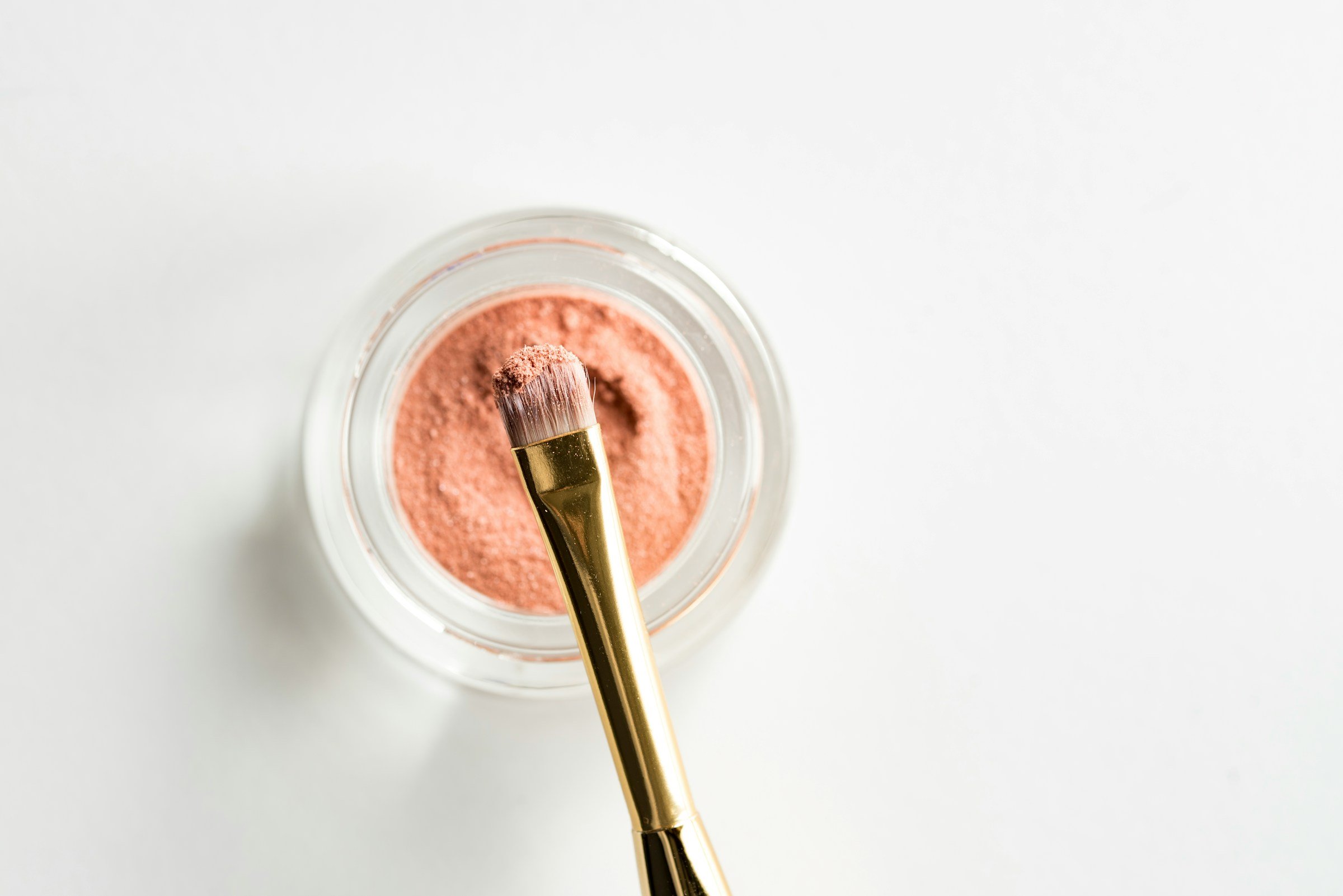Your makeup bag is dirtier than you think
written by World Vision’s Campaigns and Policy Advisor, Morgan Theakston
Image credits: Laura Chouette via Unsplash
In my job, it's a never-ending rollercoaster of discovering the shady truth behind the products I love. From my clothes, to my daily flat white, phone, and chocolate, all are tainted with the devastating story of child labour and modern-day slavery. Well friends, the rose-tinted glasses are off when it comes to my beauty routine because the reality is far from beautiful.
As I stand in front of the mirror trying to gracefully embrace ageing and achieve glazed donut skin, kids are dying in collapsed mine shafts in Africa while digging copper for the serums. In India, thousands of small children toil deep underground, risking injury and diseased lungs to dig for mica, the glittery mineral that adds shimmer to eye shadows and blush and prevents our foundation from caking.
I’m sold the dream of everlasting youth, while these children are stripped of theirs.
Now, I look for cosmetic companies that are transparent about this issue and can either prove that they’re sourcing from places who don’t use child labour or have opted for synthetic mica.
Reaching for my eyeliner, lipstick, foundation, and even shampoo feels different now that I know the luxurious silkiness is due to unethical palm oil. Last year, nearly all of New Zealand’s palm oil came from plantations across Indonesia and Malaysia, where children hack down palm fruits and lug heavy sacks in blistering heat. And if only it were as easy as trying to buy products without palm oil listed as an ingredient, but it’s sneaky, hiding behind 200 names like Palmitate, Sodium Lauryl Sulphate, and Stearic Acid. This is why I now opt for buying products from companies that take a 100% palm oil-free approach.
And onto my moisturiser. I’ve always seen ingredients like cocoa butter and shea butter as synonymous with a warm hug for the skin, but behind the sweet scents are children toiling on cocoa farms in West Africa. In Ghana and Côte D’Ivoire, where New Zealand sources 27% of its cocoa, more than 2 million children, some of whom have been trafficked, wield machetes to clear land and collect cocoa pods. Now I look for companies who work directly with cocoa producers to ensure they don’t use child labour and are paid fairly.
Image credits: Joanna Kosinska via Unsplash
But it claims to be sustainable and cruelty-free!
When I get down to the natural products I intentionally bought because they were labelled “sustainable” and “organic”, I feel tricked. Because now I know “natural” and “organic” just mean ingredients from mines and plantations, and the bar is so low that a product wrapped in recycled plastic can be called “sustainable” without an ounce of consideration for the human cost.
It’s ironic that products labelled “cruelty-free”, “sustainable”, or “clean” can still contain ingredients harvested by children. It’s clear we can’t rely on labels and filters when buying beauty products. We have to do our own research.
New Zealand is part of the problem
New Zealanders like to think of ourselves as fair and equitable, but we are most certainly part of the problem. Last year, we imported numerous cosmetic ingredients from countries where child labour and slavery are known issues, including palm oil from Indonesia, cocoa from Ghana, and vanilla from Uganda and Papua New Guinea. We also imported $370M of beauty products that are likely connected to child labour.
Some of my favourite Kiwi brands promote themselves as cruelty-free but are tight lipped about where they get their ingredients. Are they free of child labour? Who knows? Most companies probably have no clue themselves. And a big reason for this murky situation is that there are no laws in New Zealand that push companies to dig deep into their supply chains and ensure ethical sourcing.
Image credits: Dapo Abideen via Pexels
Beauty doesn’t have to mean pain
It can be tempting to embrace the ‘’ignorance is bliss” mindset. In a world that bombards us with sad news, it’s hard to find the capacity to care about yet another issue. But learning this shouldn’t cripple us with guilt, it should fuel us to take action. Hope exists and change is possible. As the people buying the products, we have power to demand change. You can start by supporting a modern slavery due diligence law in Aotearoa that holds brands accountable.
You can also reach out to brands and ask them “how do you make sure your mica and copper are sourced without using child labour?” Next time you need to buy a lipstick, you can choose to opt for one from a palm-oil free brand. You can also tell a friend about these issues to continue the conversation and raise awareness.
Last week, I needed to replace my tinted moisturiser and I found myself in a shop I've gone to a million times. But this time it was different. As I stared at all the makeup and serums, the price tags suddenly paled in comparison to the real cost. It’s the unseen children who are paying the steepest price. Sacrificing their childhood and education for a pittance or worse, for nothing. Working long hours in the heat, the rain, under the ground and in the dark. And it begs the question - how much are we willing to pay for beauty?
Together, we can make the beauty industry a place that’s a bit more beautiful for everyone.
To learn more about World Vision’s work advocating for a modern slavery law in Aotearoa, please visit: https://www.worldvision.org.nz/causes/advocacy/modern-slavery-legislation/



